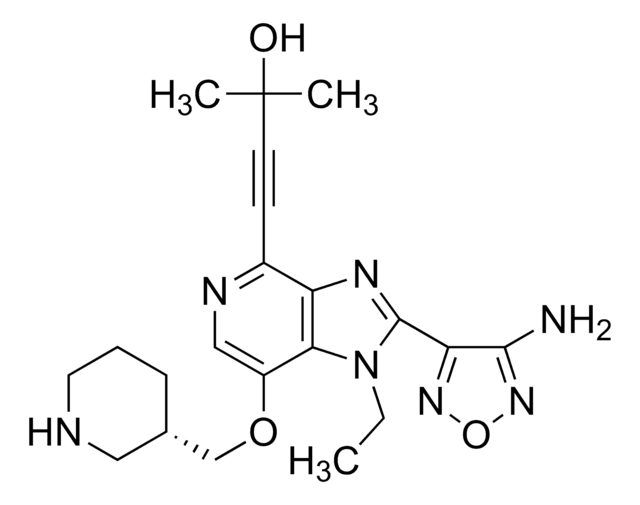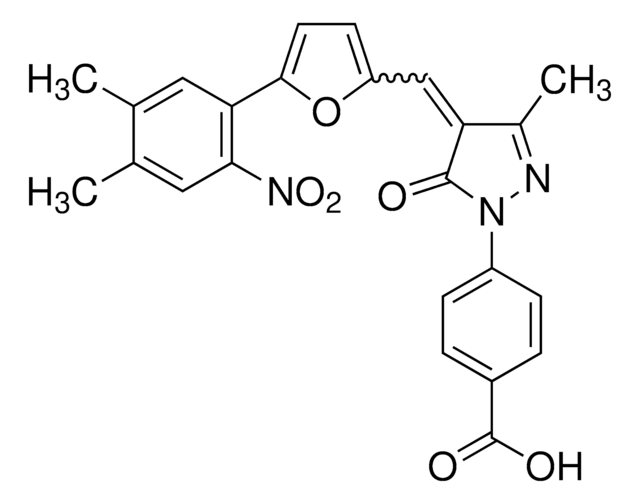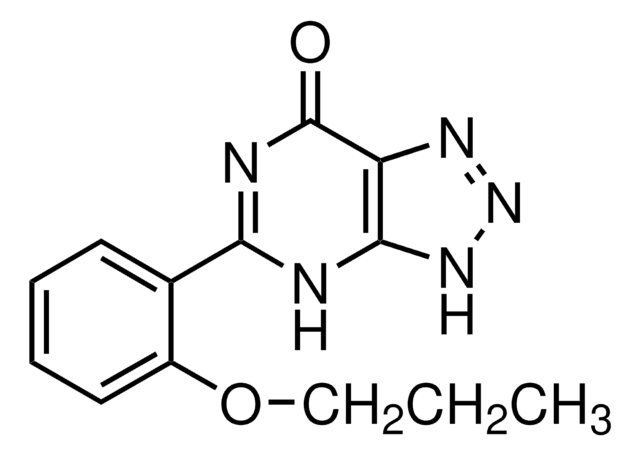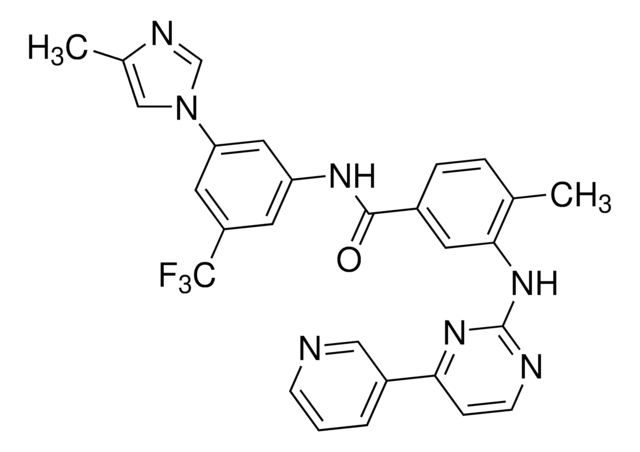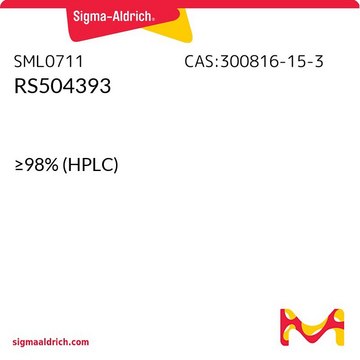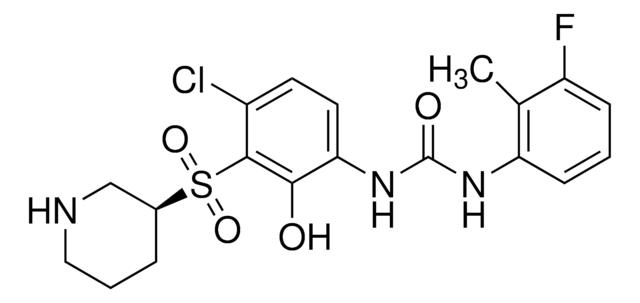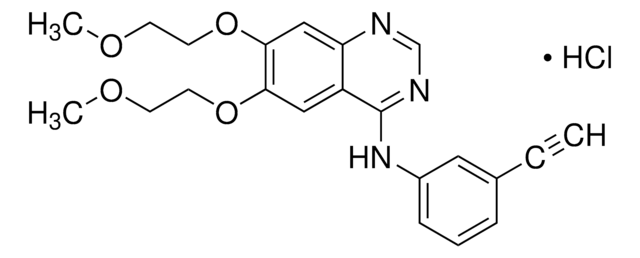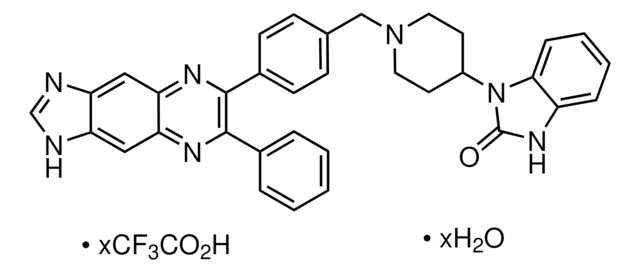SML0421
SB265610
≥98% (HPLC)
Sinónimos:
1-(2-Bromophenyl)-3-(4-cyano-1H-benzo[d] [1,2,3]triazol-7-yl)urea, N-(2-Bromophenyl)-N′-(7-cyano-1H-benzotriazol-4-yl)urea, SB 265610
About This Item
Productos recomendados
assay
≥98% (HPLC)
form
powder
color
white to light brown
solubility
DMSO: 15 mg/mL, clear
storage temp.
2-8°C
SMILES string
Brc1ccccc1NC(=O)Nc2ccc(C#N)c3nn[nH]c23
InChI
1S/C14H9BrN6O/c15-9-3-1-2-4-10(9)17-14(22)18-11-6-5-8(7-16)12-13(11)20-21-19-12/h1-6H,(H2,17,18,22)(H,19,20,21)
InChI key
SEDUMQWZEOMXSO-UHFFFAOYSA-N
Application
- as a cysteine-amino acid-cysteine (CXC)-chemokine receptor type 2 (CXCR2) antagonist to study its effects on the binding of chemokine with G-protein coupled receptors (GPCR)
- as a CX-chemokine receptor type 1 (CXCR1) inhibitor to study its effect on the chemotactic activity of chemokines on inflammatory cells
- as a CXCR2 antagonist to study its effect on migration of neutrophils to the rat brain
Biochem/physiol Actions
Features and Benefits
signalword
Warning
hcodes
Hazard Classifications
Acute Tox. 4 Oral
Storage Class
11 - Combustible Solids
wgk_germany
WGK 3
flash_point_f
Not applicable
flash_point_c
Not applicable
Elija entre una de las versiones más recientes:
Certificados de análisis (COA)
¿No ve la versión correcta?
Si necesita una versión concreta, puede buscar un certificado específico por el número de lote.
¿Ya tiene este producto?
Encuentre la documentación para los productos que ha comprado recientemente en la Biblioteca de documentos.
Artículos
Sigma-Aldrich offers many products related to chemokine receptors for your research needs.
Nuestro equipo de científicos tiene experiencia en todas las áreas de investigación: Ciencias de la vida, Ciencia de los materiales, Síntesis química, Cromatografía, Analítica y muchas otras.
Póngase en contacto con el Servicio técnico